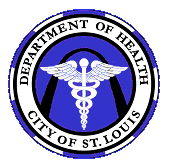Department of Health
National Public Health Week 2016 Healthiest Nation 2030
What Is Public Health?
This article is 8 years old. It was published on April 1, 2016.

What is Public Health?
During the week of April 4-10 the nation will be celebrating National Public Health Week. The theme for this year's celebration is Healthiest Nation 2030. The annual celebration is a great opportunity for public health professionals and the public at large to pause and reflect on what is public health. It's also a great time to think about what positive steps we have taken in making our community healthier.
According to the Centers for Disease Control (CDC), public health can be defined as "the science of protecting and improving the health of families and communities through promotion of healthy lifestyles, research for disease and injury prevention and detection and control of infectious diseases." Communities can range from small, local neighborhoods to entire countries or regions of the world.
Public health encompasses an extensive array of disciplines including subjects like epigenetics, chronic disease, the science of aging, mental health, disaster preparedness and response, refugee health, injury prevention and even tobacco control. Throughout the last century, public health professionals and their community partner organizations have made enormous strides in increasing healthy environments and lifestyles. The eradication of smallpox on a global scale, the establishment of international nuclear test bans and environment accords, the foundation of an HIV/AIDS coalition in Africa, and the extension of the average American lifespan by 30 years are just a few of the major accomplished in public health.
The City of St. Louis Department of Health (DOH) is constantly creating and reconfiguring new campaigns and messages to better inform and protect its citizens to ensure better health for the community. Some of the current topics being addressed include mosquito control, lead poisoning prevention, and the reduction of obesity rates.
With the approach of spring, mosquito control is a major concern due to the expected rise of mosquito bites with the changing of the seasons. Mosquitoes are a catalyst for numerous diseases affecting thousands of people in the U.S. every year. The DOH joins the American Mosquito Control Association in encouraging individuals to protect themselves from mosquitoes by following the 4Ds (Drain standing water in your yard each week. Mosquitoes breed in water. Dress in lightweight, long sleeved shirts and long pants while outdoors, use insect repellent with DEET whenever outside, and limit time spent outdoors at Dawn or Dusk when mosquitoes are most active and feeding).
As a result of Mayor Francis Slay's 2003 comprehensive action plan to eradicate childhood lead poisoning in the City of St. Louis, lead poisoning rates have been on a continuous decline over the years. The unified efforts of the Department of Health, Building Division, Problem Properties Court, Community Development Administration, Human Services Department and numerous community partners resulted in lead poisoning rates in children dropping from 1,638 in 2003 to 197 children in 2014, an 88 percent decrease.
The City of St. Louis has been working hard to support its "Obesity Reduction Plan" initiated in 2013 by Mayor Slay. The goal of this plan is to decrease the rate of obesity by 5 percent in the City by the year 2018. The DOH leads several initiatives to impact individual's knowledge and awareness of healthy lifestyle practices including Let's Move! STL, JUMP N2 Shape, and Small Changes for Health.
Throughout the past 10 years, via collaborations and determined efforts conducted by the City and its partners, considerable improvement has been achieved in the major health indicators listed below as stated in the most recent Understanding Our Needs report (https://www.stlouis-mo.gov/government/departments/health/documents/public-health-understanding-our-needs-report.cfm) :
- Overall mortality rates have decreased 14 percent
- Heart disease mortality has decreased 26 percent
- Incidence of the top four types of cancer decreased by an average of almost 10 percent
- Deaths due to stroke decreased 36 percent
- Diabetes deaths decreased 11 percent
- Infant mortality declined 7 percent
- Childhood lead poisoning prevalence fell by 80 percent
- Incidence of gonorrhea declined 41 percent
- 6 percent fewer children with asthma on Medicaid received acute care in a hospital
As time moves forward, the City of St. Louis Department of Health will continue its concerted efforts in protecting and improving the overall health and quality of life for individuals in the community. The City of St. Louis is doing its part in helping to make the U.S. the Healthiest Nation by 2030.
Written by: Kaitlin Cilufo, Southern Illinois University Carbondale Dietetic Intern

-
Department:
Department of Health
-
Topic:
Health